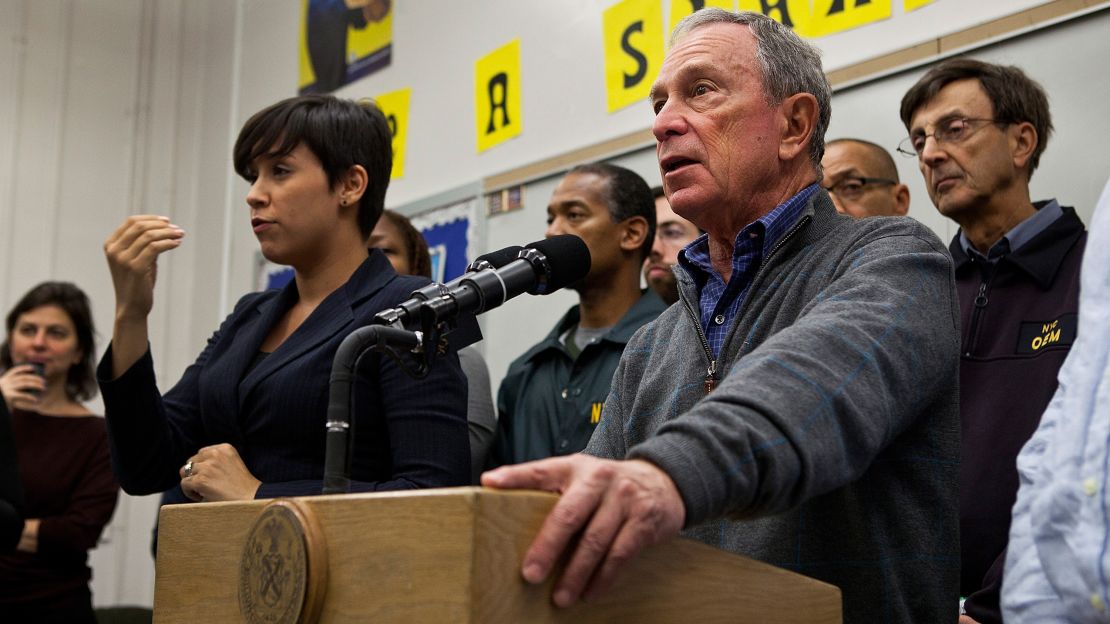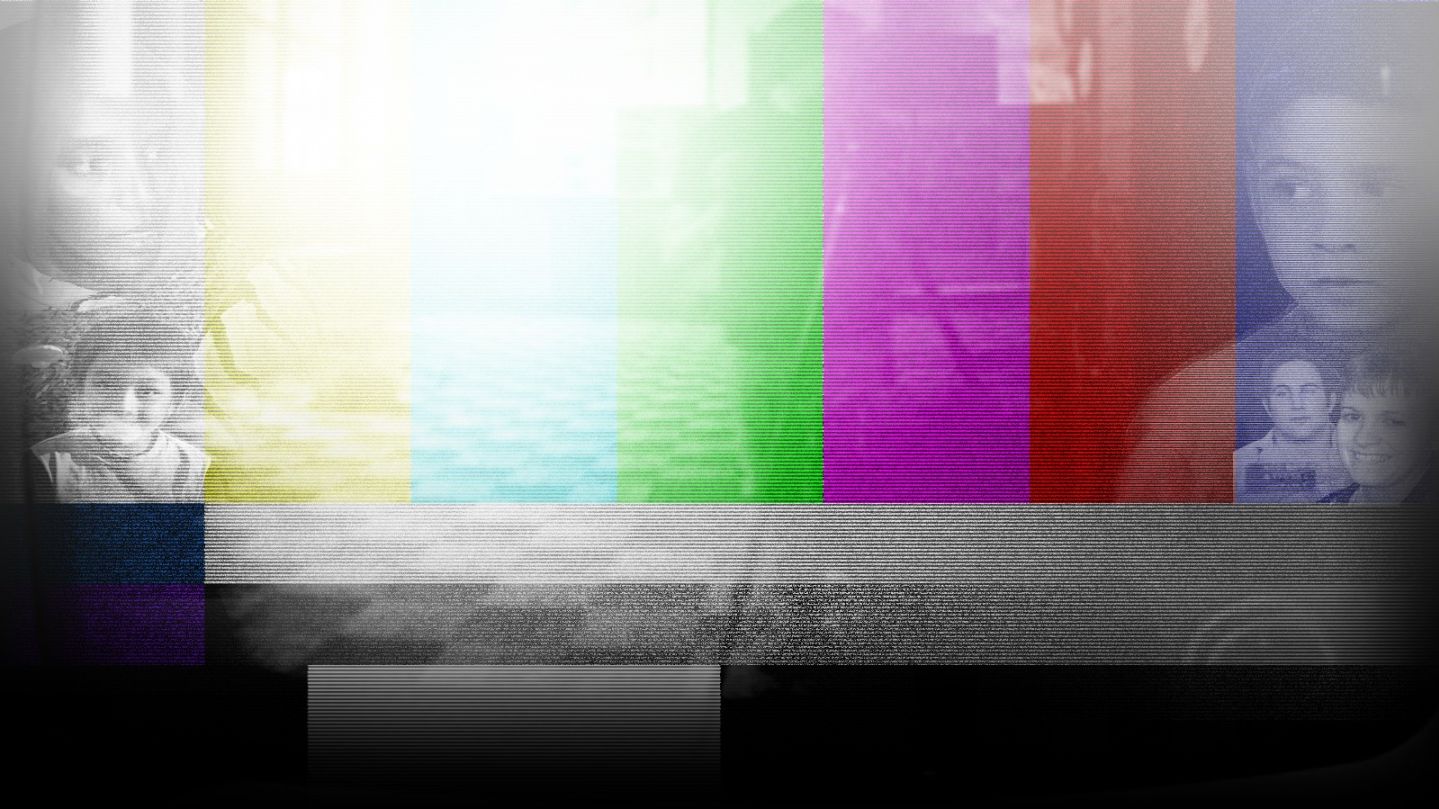Editor’s Note: This is part of an occasional series called “Rewind: Where are they now?” It catches up with people who stumbled into the headlines – and then faded from view.
Story highlights
Lydia Callis won fame as expressive sign language interpreter during Superstorm Sandy
A hearing child of deaf parents, Callis grew up interpreting for her mother, father and siblings
The advocate for the deaf community says she "has a voice so I'm going to use it"
Lydia Callis is the sole member in a family of six who isn’t profoundly deaf.
The eldest child, she stood by her mom and dad during medical appointments, trips to the store, family gatherings and parent-teacher conferences, mediating the world for them – even handling situations some would consider too mature for an 8-year-old.
“I had to learn how to grow up very quickly,” said Callis, now 33. “At the same time, I felt good. … I could help my parents.”
That sense of loyalty and calling brought Callis unexpected fame as a sign language interpreter for then-New York Mayor Michael Bloomberg during Superstorm Sandy and its aftermath.
At Bloomberg’s right side during news conferences in fall 2012, Callis inadvertently stole the spotlight from the dry and dour-faced mayor. Her emotive facial expressions and gestures generated buzz on social media and beyond.
“They’re supposed to be invisible,” Carol Padden, a University of California, San Diego, professor and co-author of the book “Inside Deaf Culture,” said of interpreters. “This one was not.”
On “The Daily Show,” Jon Stewart said Callis’ “expressive sign language interpreting turned disaster press briefings into an Alvin Ailey sign language recital.”
Tumblr accounts celebrated her. Twitter feeds oozed with love. News stories and online blogs chronicled her story.
New York magazine praised her for giving the city “a legitimate reason to smile,” even as the looming storm forced subways and commuter rail lines to halt service, schools to close and the evacuation of low-lying areas.
The storm that broke records – and hearts
“The first thought in my mind was, ‘Boy, I have a difficult task at hand,’ ” Callis recalled. “And because New York City is such a melting pot … you have deaf individuals from all over the world.”
Hundreds of sign languages exist, and not everyone with hearing problems uses sign language.
Callis said she reached deep into years of training and personal experience.
“It was important for me to express the urgency of what was going on,” she said.

At one point, Bloomberg warned that the time had passed for relocation or evacuation: “Conditions outside are dangerous, and they’re only going to get worse in the hours ahead.”
He described the prospect of high winds, heavy rain and rising waters.
As he spoke, Callis’ face, hands and body spelled out the dangers for New Yorkers who could not hear. A falling tree, for instance, was conveyed with both arms – one was the ground, the other the tree.
When Bloomberg said, “It is dangerous,” a sense of peril visibly spread across her face.
NYC’s sign language interpreter wows the Web
Callis was responsible for reaching an array of deaf people with varied language skills, said Kim Kurz, who chairs the American Sign Language and interpreting education department at the National Technical Institute for the Deaf.
“She did her best given the difficult and stressful consequences,” Kurz said via email.
Callis earned a bachelor’s degree in ASL-English interpretation from the institute, which is part of the Rochester Institute of Technology in Rochester, New York. She also held a staff interpreting position there for six years.
Her expertise, however, did little to prepare Callis for the media glare. Spoofs on “Saturday Night Live” and “Chelsea Lately” soon followed the virtual adoration.
Callis and others were particularly offended by a segment with a boob-grabbing, short-haired interpreter gesticulating wildly next to comic Chelsea Handler.
In a letter to Handler and the show’s producers, the National Association of the Deaf said the interpreter “gestured in an ugly fashion” that was a “totally offensive mockery of American Sign Language.”
Callis said she found the skit not only “extremely obnoxious” but “disgusting and offensive.” It was no different than “making fun of someone else with a disability other than deafness.”
But not everyone saw the attention as bad.
Padden, the California professor, said some of the humor was refreshing. The parodies were, in part, she said, a commentary on Bloomberg’s blandness.
“That’s the funny part – the two of them together,” she said of the unlikely pairing. “We shouldn’t be taking sign language so seriously.”
After the skits and all the media exposure, Callis said, she decided against appearing in any other Sandy news conferences. She didn’t want to be the focus.
“The reason I was there was to provide access to the deaf community, not to be some sort of parodied viral superstar,” she said.
When Bloomberg appeared with another interpreter, fans took to Twitter to express disappointment.
Fans want Bloomberg’s Sandy signer back
Kurz acknowledged that Callis was overly animated but said it was part of her job.
“It is possible that some people who were clueless do not understand that American Sign Language uses facial expressions which indicate grammatical features and is part of the language itself,” she said. “Her goal was to make sure the message was clear to all deaf people with various language skills.”
Kurz sees the use of hands, body language, facial expressions and mouth movements to stress importance as similar to intonation and inflection in speech.
“The faculty and staff … are very proud of Lydia Callis and her work in the field of interpreting,” she added.
Callis used the attention to bring greater awareness of the deaf community, including starting LC Interpreting Services – a company that provides interpreters, “cultural competency” training, interpreter mentoring, transcription services and sign language training. The firm also offers interpreters in medical and educational settings and for conferences, weddings and even births.
Part of her work, she said, involves helping businesses to become “deaf friendly” for clients and customers.
Callis discovered the difficulties that those with a hearing loss face early on. Her mother and father, two sisters and a brother are deaf. Two young nieces are as well.
“Deafness is my culture. It’s where I come from,” she said.
Growing up in Chicago, Callis was protective of her parents and siblings. The stares from strangers bothered her. So did the pity.
“I didn’t learn how to speak until I started preschool,” she said. “There were times throughout my life where I definitely felt like the odd girl out.”
People would always tell her she should become a sign language interpreter. But after graduating from high school, she moved to Arizona to study interior decorating. She wanted to decide on her own what she would become.
“I wanted to be a free bird and … travel and be on my own and experience the world on my own time and at my own pace,” she said.
When her mother visited her in Phoenix about a year and half later, Callis couldn’t remember some of her sign language skills.
“I’ll never forget that moment,” she said. “I was devastated.”
She spent the night in bed crying. The next morning, she told her mother she was changing her major.
Today, Callis sees interpreting as part of her destiny. Just as she once helped her family to connect with others, she works to build bridges between the hearing and nonhearing worlds.
“I’m really an advocate and an ally for the deaf community because I do have a voice,” she said after interpreting at a corporate diversity conference on Wall Street. “I’m that one hearing person in my family that has a voice so I’m going to use it.”
Mandela memorial interpreter asks forgiveness, calls himself champion




